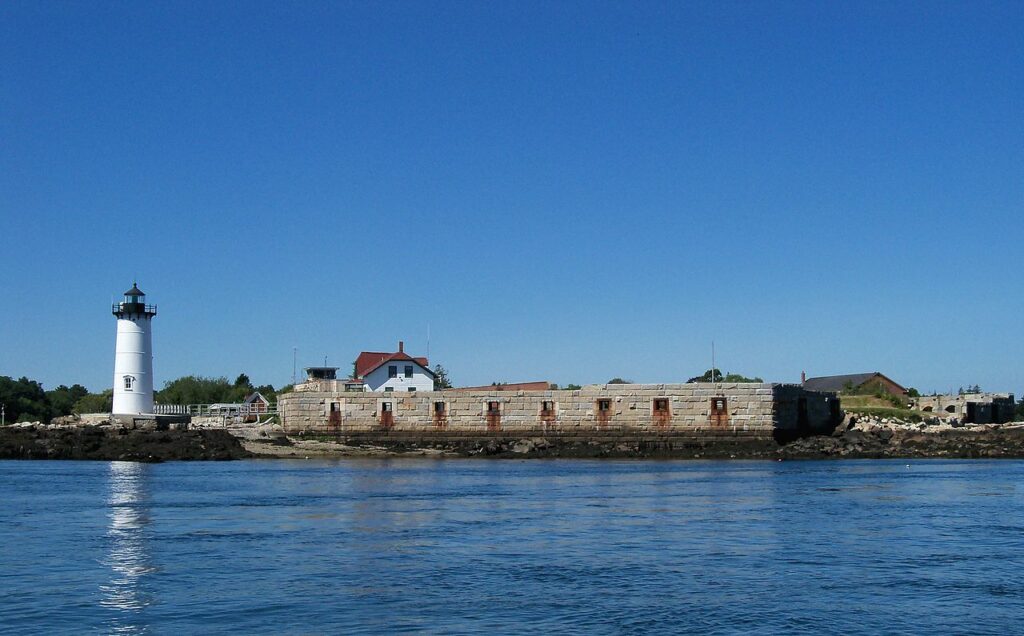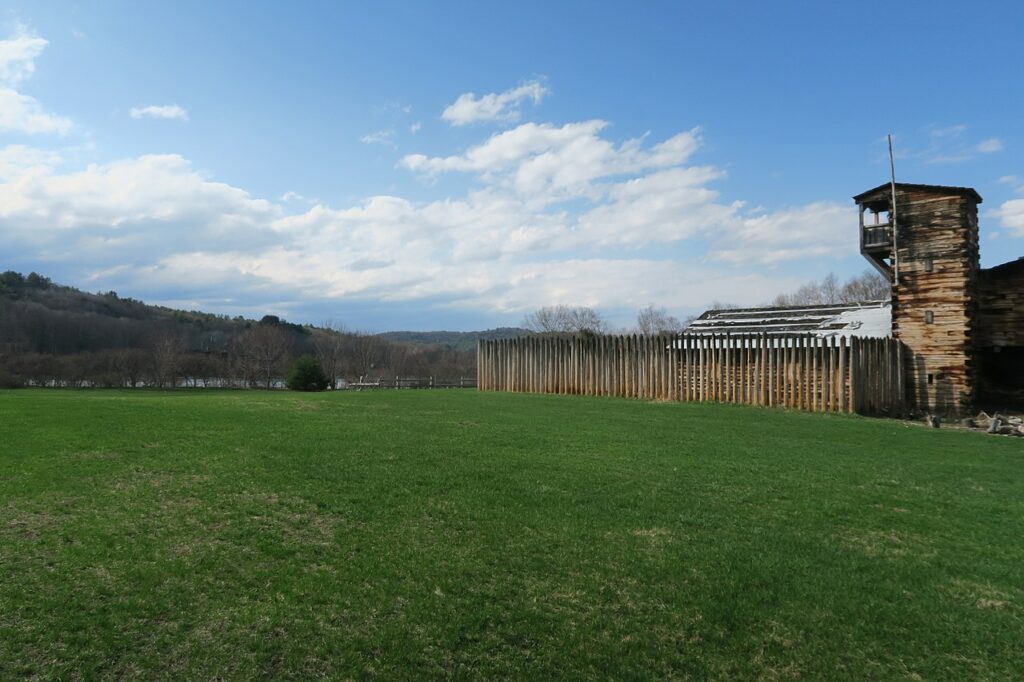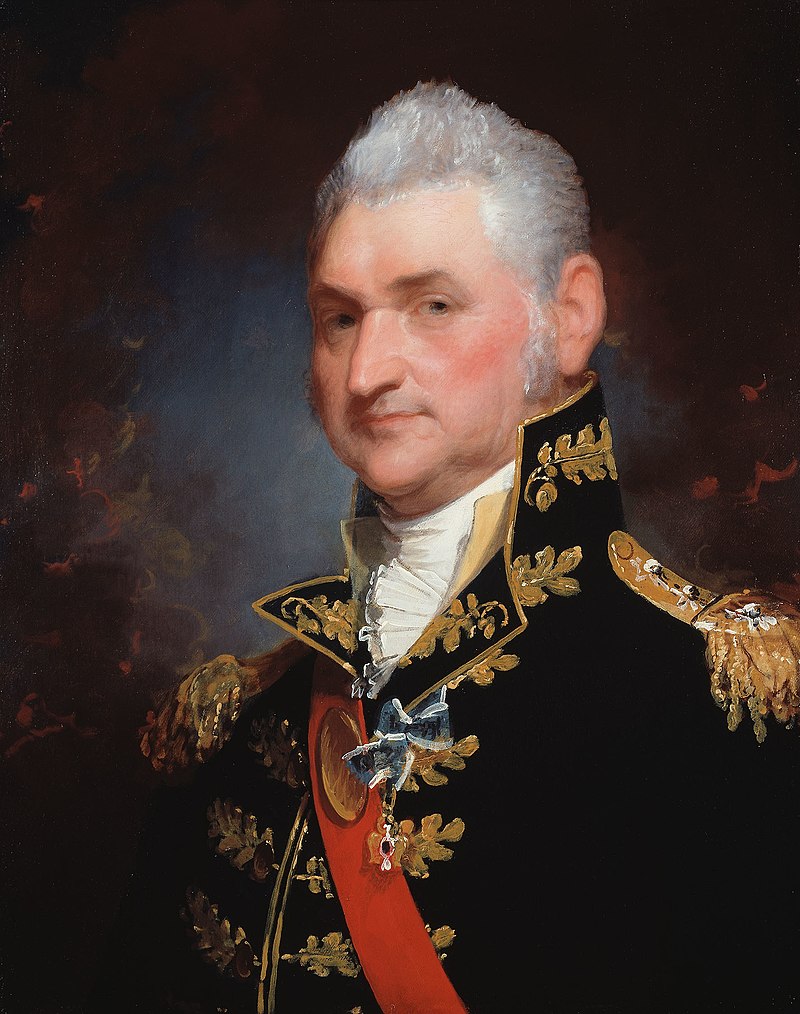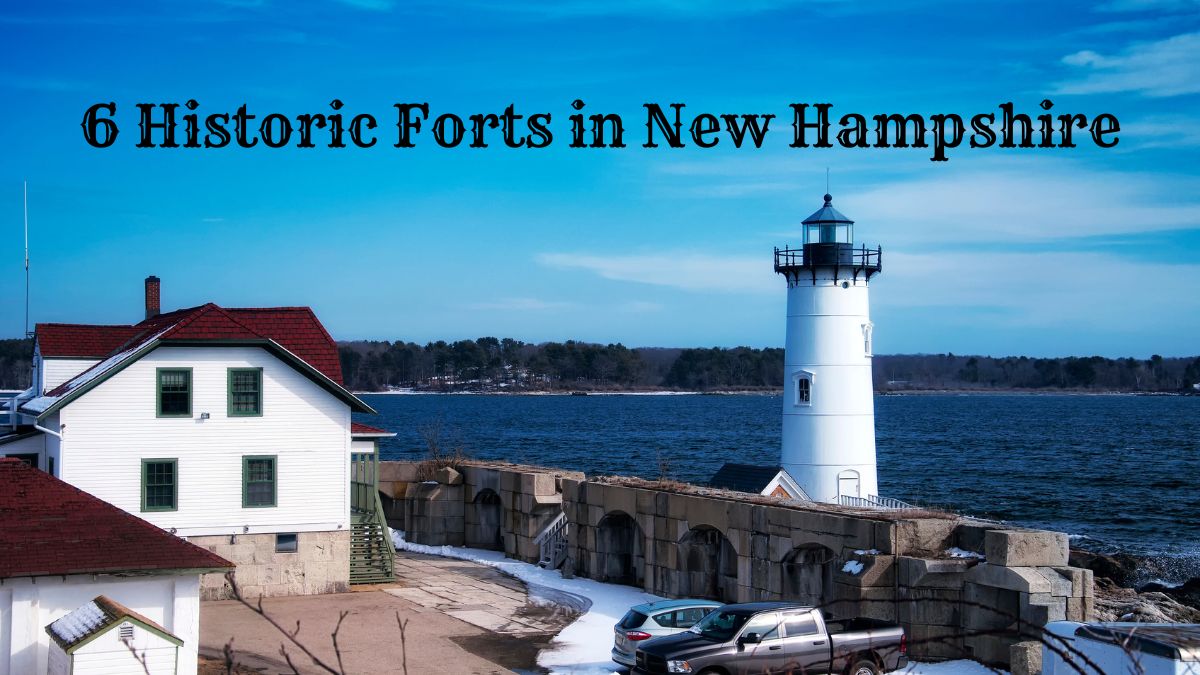The historic forts in New Hampshire are silent witnesses to the state’s rich military legacy and its pivotal role in shaping America’s defense and history.
From the earliest wooden fortifications, built as bulwarks against indigenous confrontations, to the more sophisticated structures of the World Wars, these towers offer a captivating journey through time.
Each fort’s unique narrative encapsulates New Hampshire’s strategic importance and enduring commitment to safeguarding the nation.
Historic Forts in New Hampshire
| 1. Fort Sullivan | 6. Fort Dearborn |
| 2. Fort Constitution (Fort William & Mary) | |
| 3. Fort Stark | |
| 4. Fort at No. 4 (Charlestown) | |
| 5. Fort Wentworth |
1. Fort Sullivan
Fort Sullivan, located in Portsmouth, New Hampshire, is a testament to the state’s strategic importance during pivotal moments in American history. Its location at the mouth of the Piscataqua River made it a crucial point of defense and observation, especially during military unrest.
Origins and Historical Significance
The fort’s origins can be traced back to the American Revolution. Initially established in the 1770s, it played an instrumental role in the state’s defense against potential threats. Fort Sullivan, like its counterparts, was a key player in the overarching defensive strategy of the United States during its formative years.
Key Figures: Captain John Mason
One significant figure associated with Fort Sullivan is Captain John Mason, who was actively involved in early fortifications in the region. His leadership and vision ensured that Portsmouth and its surrounding areas were adequately defended.
Role in the Revolutionary War
One of the significant events that the fort is remembered for is its involvement in the Revolutionary War. While New Hampshire saw limited direct conflict during this period, the fort served as a deterrent and a symbol of resistance against British rule.
Over the years, it underwent numerous renovations and upgrades, reflecting the changing needs and technologies of the times.
Legacy of Fort Sullivan
Fort Sullivan’s prominence waned post the Revolutionary era, but its historical significance remains. Today, while the original fortifications have primarily been replaced or modified, the legacy of Fort Sullivan lives on, reminding visitors of the resilience and foresight of New Hampshire’s early defenders.
2. Fort Constitution (Fort William & Mary)

Situated on the shores of New Castle, New Hampshire, Fort Constitution remains a significant emblem of the state’s maritime defense strategy. Overlooking the mouth of the Piscataqua River, the fort’s prime location afforded it a key role in safeguarding the region from maritime threats.
Previously known as Fort William and Mary, its roots date back to the late 17th century. In December 1774, Paul Revere made one of his lesser-known rides to Portsmouth to warn the locals of British movements.
Local patriots seized the fort shortly after, capturing a significant cache of munitions later used in the pivotal Battle of Bunker Hill during the American Revolution.
Noteworthy Events: Revolutionary Actions
The seizure of Fort William and Mary is recognized as one of the earliest overt acts of the American Revolution. This event predated the more well-known confrontations in Lexington and Concord. Fort Constitution, with its storied walls, played a quiet but integral part in the eventual success of the Revolutionary cause.
Renovations and The Modern Era
Following the Revolution, in the late 1790s, the fort underwent significant renovations and was renamed Fort Constitution. Its defenses were updated periodically, especially during the 19th century, to keep pace with advancements in military technology and to respond to the ever-evolving geopolitical threats.
The Living Legacy of Fort Constitution
While Fort Constitution might not have seen battles on the scale of other American fortifications, its enduring presence speaks to its importance in the broader tapestry of American military history.
Today, visitors to the fort are treated to a blend of historical architecture and the natural beauty of its coastal surroundings, making it a lasting tribute to New Hampshire’s role in the nation’s defense narrative.
3. Fort Stark

Perched on the rugged expanse of Jerry’s Point, Fort Stark Historic Site bears witness to New Hampshire’s military preparedness during some of the world’s most tumultuous times. Its commanding view of the Atlantic Ocean made it an essential asset in harbor defenses during the World Wars.
World Wars and Military Importance
Constructed in the era of the World Wars, the fort’s robust defenses and towering walls became particularly vital during World War II. Fort Stark served as a sentinel, equipped to counter potential maritime threats emanating from the vast expanse of the Atlantic Ocean, underscoring the importance of coastal defense during this global conflict.
Preserving History: The Visitor Center
Today, Fort Stark’s legacy is preserved through its dedicated visitor center. This center tells of the site’s storied past, offering glimpses into its rich military history. Among the preserved remnants are the formidable gun emplacements and a curated museum that sheds light on the establishment of the renowned Portsmouth Naval Shipyard.
Modern Amenities and Cautions
While it serves as a beacon of history, Fort Stark also caters to contemporary visitors. The grounds feature a welcoming picnic area and an inviting walking trail, perfect for those looking to combine history with leisure.
However, the site’s rugged nature warrants caution; visitors should be wary of potential hazards like unprotected stairways and treacherous rocky patches.
4. Fort at No. 4 (Charlestown)

Poised along the scenic stretches of the Connecticut River, the Fort at No. 4 remains a tangible relic of New Hampshire’s colonial history. The river’s strategic importance during the French and Indian War made this fort a crucial defense post, guarding against potential incursions and providing a regional stronghold.
Significance in the French and Indian War
During the tumultuous era of the French and Indian War, the Fort at No. 4 played a significant role. Its establishment was a testament to the colonies’ forward-thinking defense strategies, setting it apart from its contemporaries, such as Fort Washington, Fort Dearborn, and Fort Halifax.
Living History: Reenactments and Colonial Essence
Today, the Fort at No. 4 comes alive with historical reenactments that capture the spirit and challenges of colonial life. Visitors are transported back in time through these evocative performances, immersing themselves in the essence of revolutionary forts and the everyday lives of the people who resided within their walls.
Preserving the Past: The Legacy of Fort No. 4
The fort stands as a symbol of New Hampshire’s dedication to preserving its rich historical tapestry. It serves as an educational hub, reminding visitors of the resilience, foresight, and strategic importance of such fortifications in shaping the early trajectory of American history.
5. Fort Wentworth
Located on the northern reaches of the Connecticut River, Fort Wentworth was established in the early 18th century, primarily to safeguard the English settlements against potential threats and as a strategic outpost to bolster British claims in the region.
During its time, Fort Wentworth played a pivotal role in securing the frontier against potential Indigenous attacks and conflicts with neighboring colonial powers. Its establishment and subsequent use indicated the more immense colonial struggles for territory and influence in North America.
The Treaty of 1752
One of Fort Wentworth’s significant historical moments was its role in the Treaty of 1752. At this fort, the Native American leaders and colonial representatives met, culminating in a treaty to ensure peace and territorial agreements between the two groups.
Legacy and Modern Day
While Fort Wentworth might not have witnessed battles of immense scale, its strategic importance cannot be understated. The fort played a vital role in ensuring the safety of the northern frontier, allowing English settlements to flourish and paving the way for further expansion.
Today, while physical remnants of the fort may be limited, its legacy remains an integral chapter in the intricate tapestry of New Hampshire’s colonial history.
6. Fort Dearborn
Before 1942, the park’s location was premium oceanfront private property. However, with the impending global conflict of World War II, the US government recognized the strategic importance of this coastal expanse.
They condemned and purchased the land, laying the foundation for Fort Dearborn. It wasn’t until 1961 that the site was handed over to the state of New Hampshire, with the original owners losing their chance to reclaim it.
Honoring Henry Dearborn

The fort was christened in honor of Henry Dearborn, a Revolutionary War major-general. He later held distinguished positions as the Commanding General of the United States Army and the Secretary of War.
Fort Dearborn, Fort Stark, Fort Constitution, and Fort Foster, formed the robust Harbor Defenses of Portsmouth. The defense framework saw the 22nd Coast Artillery Regiment take charge between 1940-1944.
Battery Installations and Firepower
The primary artillery strength of Fort Dearborn comprised two 16-inch Mark IIMI ex-Navy guns. Protected by formidable concrete and earthen casemates, this battery was completed and ready for action by June 1944.
Known initially as Battery 103, it later received the name Battery Seaman, a tribute to Colonel Claudius M. Seaman. A PSR bunker, responsible for plotting as part of the Coast Artillery fire control system, was situated west of Battery 103.
Additionally, the fort housed Battery 204, armed with two 6-inch M1 guns. Completed in tandem with Battery Seaman, its location near the Seacoast Science Center today exhibits 16-inch shells, reminding visitors of its potent past.
Another similar installation, Battery 205, was conceived for Fort Foster but remained unarmed. Moreover, Fort Dearborn had the added protection of the Anti-Motor Torpedo Boat Battery 951 near Pulpit Rock.
Deactivation and Current State
By 1948, the imminent threats had dissipated, leading to the deactivation of Fort Dearborn. Its formidable guns, once symbols of defense, were scrapped. However, its legacy was etched when the Pulpit Rock Base-End Station, situated just outside the park’s boundary, earned a spot on the National Register of Historic Places.
Rye Air Force Station: The Air Defense Legacy
Some portions of Fort Dearborn transitioned to serve as a radar station for the US Air Force in 1949. By 1955, it was named the Rye Air Force Station, crucial in air defense and supporting the Pease Air Force Base operations.
Although deactivated by 1959, an unmanned “gap filler” radar kept its watch till 1968. No trace of the Air Force installations remains today, but the memories of its role in defense live on.
Related: 8 Historic Forts in New Jersey
The Foundation of the Forts
New Hampshire’s historic forts have a rich history dating back to the American Revolution. One notable figure involved in their establishment was Paul Revere, who played a significant role in the Revolutionary War. These forts served as crucial defenses during the American Revolution and played a part in both World Wars.
One historic fort is located at Odiorne Point State Park, once the site of Jerry’s Point, an early fortification during the American Revolution. It was a critical vantage point during the Battle of Bunker Hill. Similarly, Fort Sullivan, situated at the mouth of the Piscataqua River, played a vital role in the Revolutionary War.
The fort witnessed significant engagements, such as when Benedict Arnold and his infantry regiments held off British soldiers.
Constructed primarily with stone, these forts were solid structures designed to withstand attacks. Some of them, like the Martello Tower, showcased the architectural prowess of that era. As part of the American forts network, forts in New Hampshire received support from the US Government regarding funding and infrastructure.
Historical Context
Indian Attacks and The Indian War
During the turbulent times of the Indian War, New Hampshire stood at the forefront of colonial challenges. The forts dotted its landscape weren’t just mere structures but lifelines.
These forts, primarily wood-made, symbolized the era’s construction techniques and available resources. While they might have seemed rudimentary in design, their purpose was far from basic.
Acting as safe havens, these wooden forts offered much-needed shelter and protection against the relentless Indian raids.
Given the frequency and intensity of these skirmishes, their mere existence was often the thin line between safety and peril for many settlers. Beyond their defensive roles, these forts also played a pivotal strategic role. They became the epicenters of military planning and coordination.
British troops and the colonial militia made these forts their operational hubs. The walls of these forts, which once echoed the fears and hopes of settlers, also resounded with military strategies and plans.
Both offensive expeditions into contested territories and defensive campaigns to protect the heartlands were orchestrated from these bases. The forts became the nexus of coordination, ensuring quick and decisive responses to threats.
The Civil War Era
While the major theatres of the Civil War were concentrated in the southern states, New Hampshire’s forts still carved out a role for themselves during this tumultuous period. Although they didn’t witness large-scale battles or sieges synonymous with the Civil War, their importance shouldn’t be understated.
Nestled in New Hampshire’s varied landscape, these forts evolved into essential hubs for the Union effort. Many soldiers, filled with zeal to preserve the Union, took their first disciplined steps within the walls of these forts.
They were molded into combat-ready troops, trained in warfare by experienced commanders. These forts also served as recruitment centers, where young men, stirred by patriotism or a sense of duty, enlisted to fight against secession.
One notable feature of New Hampshire’s forts during this era is their homage to prominent figures in American history. John Stark, the hero of the Battle of Bennington and a revered figure in New Hampshire, was commemorated by naming various forts.
Stark Fort, in particular, is a testament to his courage and the lasting impression he left on the state. Although the fort did not play a role in the Battle of Bennington, its name was a perpetual reminder of Stark’s contributions and the spirit of resistance and unity he epitomized.
World War I and II
During World War I and II, New Hampshire’s forts took on new importance as part of the coastal defense system, protecting the Atlantic Ocean coastline.
The 22nd Coast Artillery Regiment was stationed at some of these forts, where they manned 32-pounder guns to guard against potential attacks from enemy vessels, such as German U-boats or the Japanese fleet.
| Fort Name | Purpose | War |
|---|---|---|
| Fort Stark | Coastal Defense | WWI, WWII |
| Fort Dearborn | Training, Observation | WWI, WWII |
| Fort Constitution | Defense | WWI, WWII |
The Spanish-American War
With the outbreak of the Spanish-American War in 1898, New Hampshire’s forts played a vital role in protecting the eastern seaboard from a possible invasion by the Spanish fleet.
Fortifications were reinforced, and federal government funds were allocated to upgrade the forts’ defenses. Several forts in New Hampshire were actively prepared for battle, although no direct engagements occurred along the state’s coast during the war.
Memorial Day and Columbus Day often serve as opportunities for residents and tourists to visit these historic sites and pay tribute to the soldiers who served at these forts throughout history. Today, these forts stand as evidence of New Hampshire’s involvement in various conflicts and a testament to the strategic importance of the state’s coastline.
Related: Historic Forts in North Carolina
In Retrospect – Historic Forts in New Hampshire
New Hampshire’s historic forts stand not just as relics of a bygone era, but as enduring testimonies to the state’s pivotal role in the military tapestry of the United States.
From the earliest wooden palisades defending against indigenous attacks to the formidable concrete structures of the World Wars, each fort tells a story of resilience, innovation, and unwavering spirit.
They remind us of the sacrifices made and the challenges overcome, as bridges connecting the past and present. We’re offered a glimpse into the chapters shaping New Hampshire’s narrative as we explore these bastions, whether in the shadows of the White Mountains or overlooking the Atlantic waves.
Preserving and honoring these sites pays tribute to our shared history and ensures that future generations understand the importance of vigilance, unity, and determination.
If you have visited any of these forts, we would love to hear about your experience in the comment section below.

Cory is a website owner and content creator who enjoys fishing, history, coin collecting, and sports, among other hobbies. He is a husband and father of four.
Romans 15:4 For whatever was written in former days was written for our instruction, that through endurance and through the encouragement of the Scriptures we might have hope.

